Professor Emeritus Norman Lichtin, 1922-2012
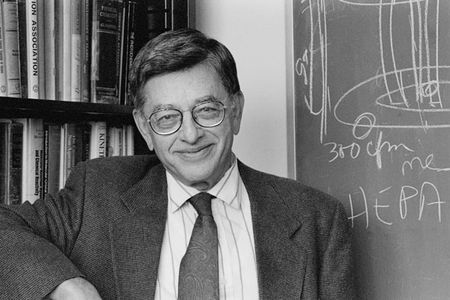
In this tribute, Professor Scott Mohr remembers his colleague and friend, Norman Lichtin
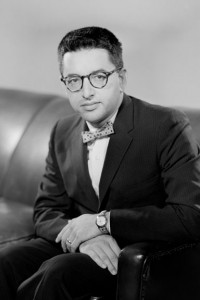
Norman N. Lichtin, longtime member of the faculty of Boston University’s Department of Chemistry and its fifth chairman, passed away on April 30, 2012, aged 89. Norman played a major role in building the department and had a distinguished research career spanning 51 years that resulted in more than 80 publications in top-tier journals. He mentored 27 PhD graduates, 15 master’s students, and 28 post-doctoral research associates. His teaching spanned the range from undergraduate courses in general chemistry, organic chemistry, and physical chemistry, and a seminar on “Man and Energy,” to graduate courses in advanced organic chemistry, physical organic chemistry, photo- and radiation chemistry and chemical kinetics.
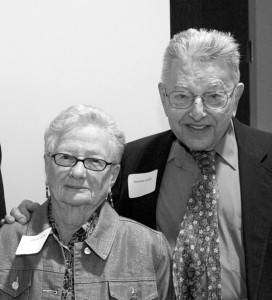
Tellingly, the “Resumé of Norman Nahum Lichtin,” which he completed in 1999 and from which many of the facts given here have been taken, begins with “FAMILY.” Those who knew Norman well would surely understand this priority. His marriage to Phyllis Selma Wasserman lasted for one month short of 65 years and produced three children – whom he delighted in talking about. Numerous times during Norman’s term as chairman, he and Phyllis entertained the faculty and staff of the Chemistry Department in their spacious, comfortable home in Newton Center. These parties had the atmosphere of extended family occasions and reflected the departmental spirit of friendship and camaraderie that Norman strove to foster. In this he emulated one of his predecessors, J. Philip Mason, who chaired the department from 1952-1961 and by all accounts was much beloved.

Beyond family (and Chemistry colleagues), Norman was involved in Temple Emmanuel in Newton, where he sang in the choir for many years, in the affairs of the local Democratic party on whose Ward Committee he served, and, after retirement, in the Newton Public Schools where he worked as a volunteer helping teach children to read at the Beethoven Elementary School. One of the teachers in whose classroom he taught – whom I happened to know – praised him highly for the diligence, patience, and kindness he displayed in that role.
Norman’s association with the Department of Chemistry began in 1947 with an appointment as Lecturer during the final year of his graduate school career. He had received a public-school education in his hometown of Newark, New Jersey, graduating from South Side High School as class valedictorian in 1939, after which he enrolled at Antioch College in Ohio. He worked at Antioch for a year (1942-43) as a mathematics instructor, and then in 1944 completed his B.S. degree with Distinction in Chemistry. He earned an M.S. in Chemistry with a minor in Chemical Engineering at Purdue in 1945, following which he moved to Harvard, receiving a Ph.D. in 1948, under the direction of Professor Paul D. Bartlett, with a thesis on “Conductivity in Liquid Sulfur Dioxide of Some Derivatives of Triphenylchloromethane.” At Boston University Norman steadily moved up the academic ladder, becoming a full Professor in 1961.
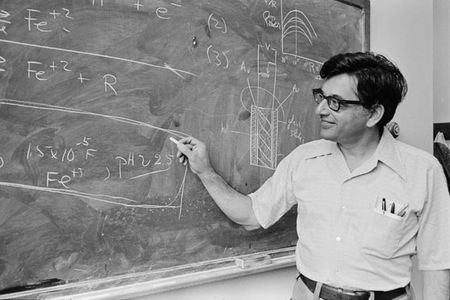
In his research career, Norman continued his dual interests in physical and organic chemistry and that led naturally into the fields of photo- and radiation chemistry. Those in turn spawned a strong involvement with solar energy research. He also had no qualms about getting involved with practical applications of research and served as a consultant to at least nine companies seeking to develop photochemistry for energy conversion. On the academic side, between 1974 and 1986 he organized or helped organize a half dozen workshops and conferences on conversion and storage of solar energy. A major collaborator in these efforts – who also became one of his best friends – was Professor Gabriel Stein of the Hebrew University in Jerusalem. Stein emigrated from Hungary to Israel and is credited with a major role in establishing modern physical chemistry in that country. Over a five-year period in the early 1970s, Lichtin and Stein published eight papers together – two of them in Science. Norman spent two sabbaticals and two winters in Israel, during which much of the work with Stein was done. The list of the 21 agencies that funded Norman’s research is formidable, including Research Corporation, NSF, the Atomic Energy Commission, the Department of Energy, the Air Force, the Office of Naval Research, the American Cancer Society, and the Department of Health, Education and Welfare.
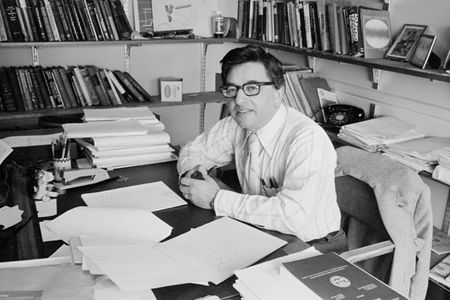
In all that he did, both as a faculty member and chairman, Norman made it clear that he wanted the Chemistry Department to follow an upward trajectory as a research-active enterprise, and as already noted, he set a strong example. He also supported the overall development of Boston University – following the plain logic that a strong department needs to be part of a strong institution. He was one of the early members of the University Professors program, helped to establish the Modular Medical Integrated Curriculum (MMEDIC), and participated in many ways in all-college or all-university affairs dealing with the advancement of the faculty and student body to higher status. When he became chairman he organized an outside visiting committee of eminent chemists to advise the BU Administration on steps that could be taken to strengthen the Department.

Norman had a major influence on the direction of the Chemistry Department’s research activities, both before and during his chairmanship. Under the chairmanship of Lowell V. Coulter (1961-1973) the number of faculty tenure lines increased from eight to eighteen. The faculty recruited to these positions mostly fell into two groups: photo- and radiation chemists (Morton Hoffman, Alfred Prock, Richard Clarke, Guilford Jones) or biochemists (Richard Laursen, Standish Hartman, Robert Umans, Scott Mohr). Norman – with his major research interest in photo- and radiation chemistry promoted that specialization in the hope that these researchers (and their students) could interact synergistically. He also encouraged the development of biochemistry, both because of its growing importance to chemistry generally, and because of the expansion of educational programs at the university that had major biochemical emphases. It’s fair to say that the modern character of the Chemistry Department emerged during this period – and in no small measure as the result of Norman’s efforts.
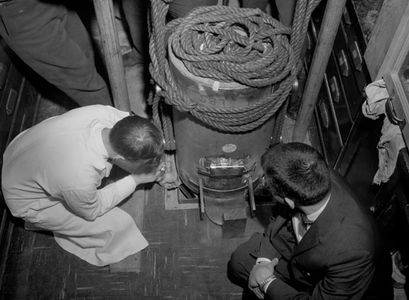
Another role that Norman played throughout his career was the encouragement of involvement of industrial researchers with Chemistry. In many instances they shared some laboratory space with faculty who had similar interests and in some cases they funded graduate students. Norman respected industrial chemists and both advised and collaborated with them; he did not have a “holier-than-thou” attitude about pure research as compared with applied projects. He did both and encouraged others to do likewise. In this era of “technology transfer,” he would fit right in.
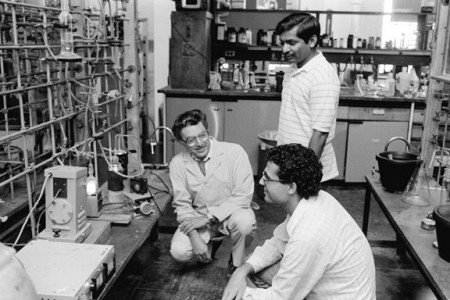
Norman Lichtin was a straight-shooter; he told you what he thought and he always kept his promises. He also more than qualifies for the term “workaholic” – as a read-through of his resumé illustrates. The sheer number of committees (and their known work-loads – such as tenure/salary review, and academic policy) makes it plain that he must have had to burn midnight oil frequently – to say nothing of the time required for his research and teaching activities and performing the duties of department chair. I personally observed on many occasions that when he was ready to leave his office (even late in the day), he often carried two bulging briefcase. He did like to get away to the rustic family cabin in Rangely, ME (population 123), for some weeks during the summer, but even then – as recounted by his son Harold – he would walk from the cabin to the town’s small general store where he could use a pay phone to call up the people in his lab and get an update on their research.
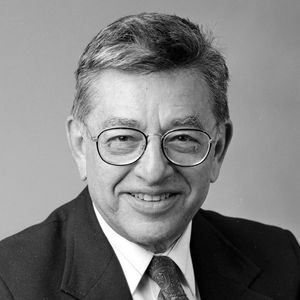
He was a loyal and constant friend, generous and kind. His loyalty also extended to the institutions he served, especially the Chemistry Department and the University. His son Harold agrees with the point made at the beginning of this essay, namely that for Norman, family always came first, but added that the Chemistry Department was a close second.
Norman Lichtin lived a rich and full life, and his accomplishments, including the contributions he made to advancing the Department of Chemistry at Boston University, will long endure.
Norman Lichtin’s “Boston University’s Department of Chemistry: a Brief History of the Period 1904-1973”, which he completed in 1989.
Norman Lichtin’s Obituary in the Boston Globe
Norman Lichtin’s Obituary in C&E News
“Norman Lichtin Helped Build Chemistry Department,” Bostonia, Fall 2012
If you would like to contribute to the Department of Chemistry in memory of Professor Lichtin, please see our giving opportunities page.